All bodies, no matter how hot or cold, continuously radiate photons. At a given temperature, the intensities of the electromagnetic waves emitted by an object vary from wavelength to wavelength throughout the visible, infrared, and other regions of the spectrum. Figure illustrates how the intensity per unit wavelength depends on wavelength for a perfect blackbody emitter. Although this figure can strictly be applied only to a black body, yet this will approximately discribe the behavior of many of the self radiating systems. For example, sun has an approximate temperature of 6000K. it is not a black body, it has an emissivity of nearly 0.6 But its peak almost occurs at a wave length that predicted by Wein's law. Suppose we have a bulb of power 100W. It emits only about 5W as visible light, rest is emitted as infrared radiated. Assume that the bulb filament has a surface area of 10mm^(2) (hc=1250eV−nm)
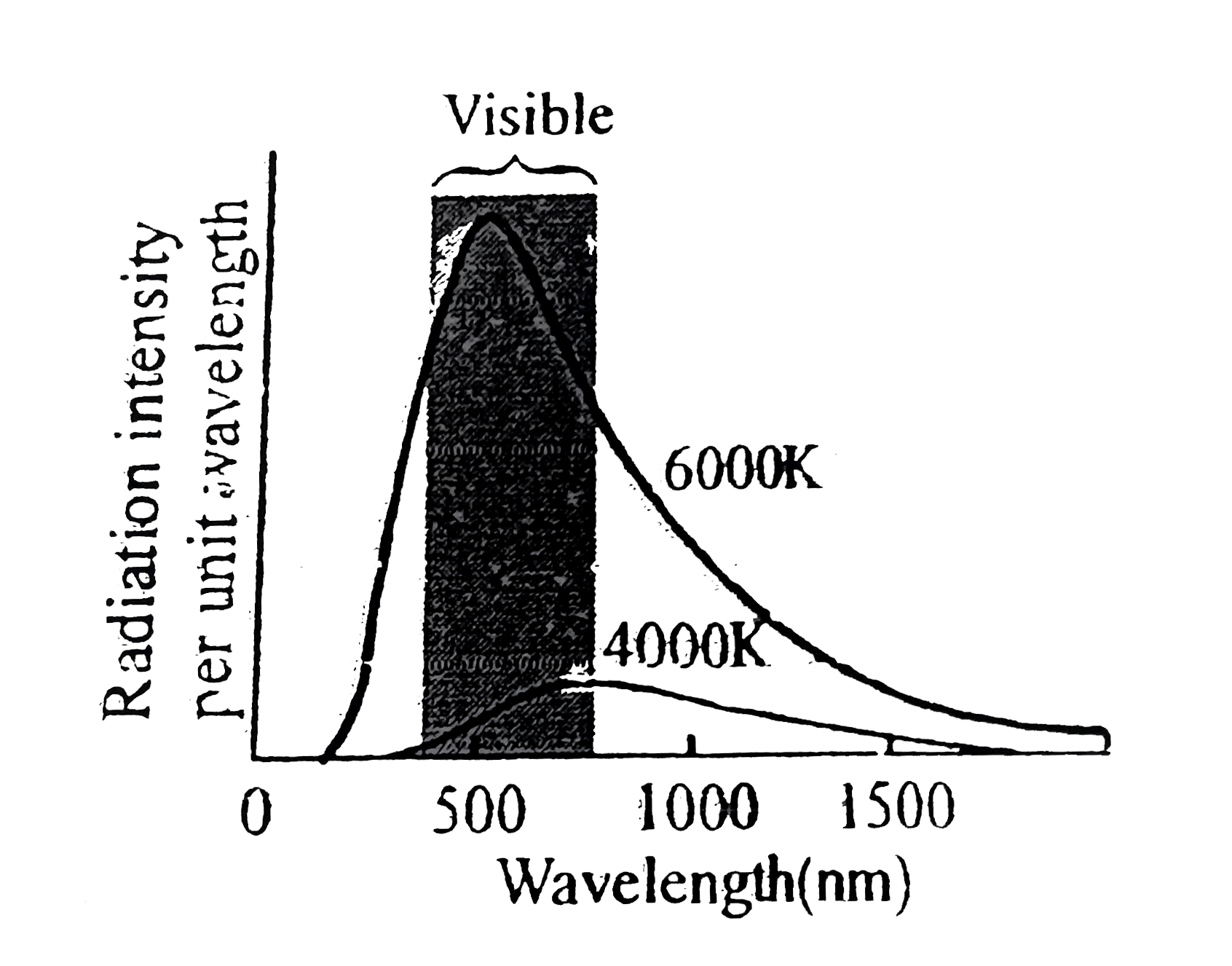
If we want of increase the number of photons emitted by the bulb in the visible region without changing the wattage, which method would be most appropriate?
increasing emissivity by a factor of 2
increasing the radius of the filament by a factor of 2 and the length by a factor of 4.
decreasing the radius of the filament by a factor of 2 and the length by a factor of 4
doubling the voltage and decreasing the length of the filament by a factor of 2.
The correct Answer is:C
dNdt↑⏐
⏐⏐ifT↑⏐
⏐⏐
dQdt=eAσT4T↑⏐
⏐⏐⇒A⏐⏐
⏐↓
Topper's Solved these Questions
- MASTER PRACTICE PROBLEMBOOK - BANSALCHAPTER - MASTER PRACTICE PROBLEMEXERCISE - Reasoning
75 Videos
- MASTER PRACTICE PROBLEMBOOK - BANSALCHAPTER - MASTER PRACTICE PROBLEMEXERCISE - Multiple objective
131 Videos
- MASTER PRACTICE PROBLEMBOOK - BANSALCHAPTER - MASTER PRACTICE PROBLEMEXERCISE - Additional topic
70 Videos
- FLUID MECHANICSBOOK - BANSALCHAPTER - FLUID MECHANICSEXERCISE - PYQS AIEEE
10 Videos
- SEMICONDUCTORSBOOK - BANSALCHAPTER - SEMICONDUCTORSEXERCISE - CBSE Question
32 Videos
Similar Questions
Knowledge Check
All bodies, no matter how hot or cold, continuously radiate photons. At a given temperature, the intensities of the electromagnetic waves emitted by an object vary from wavelength to wavelength throughout the visible, infrared, and other regions of the spectrum. Figure illustrates how the intensity per unit wavelength depends on wavelength for a perfect blackbody emitter. Although this figure can strictly be applied only to a black body, yet this will approximately discribe the behavior of many of the self radiating systems. For example, sun has an approximate temperature of 6000K. it is not a black body, it has an emissivity of nearly 0.6 But its peak almost occurs at a wave length that predicted by Wein's law. Suppose we have a bulb of power 100W. It emits only about 5W as visible light, rest is emitted as infrared radiated. Assume that the bulb filament has a surface area of 10mm^(2) (hc=1250eV−nm)

What is the approximate temperature of the filament?A500 kB350 kC2500 KD10000 KAll bodies, no matter how hot or cold, continuously radiate photons. At a given temperature, the intensities of the electromagnetic waves emitted by an object vary from wavelength to wavelength throughout the visible, infrared, and other regions of the spectrum. Figure illustrates how the intensity per unit wavelength depends on wavelength for a perfect blackbody emitter. Although this figure can strictly be applied only to a black body, yet this will approximately discribe the behavior of many of the self radiating systems. For example, sun has an approximate temperature of 6000K. it is not a black body, it has an emissivity of nearly 0.6 But its peak almost occurs at a wave length that predicted by Wein's law. Suppose we have a bulb of power 100W. It emits only about 5W as visible light, rest is emitted as infrared radiated. Assume that the bulb filament has a surface area of 10mm^(2) (hc=1250eV−nm)
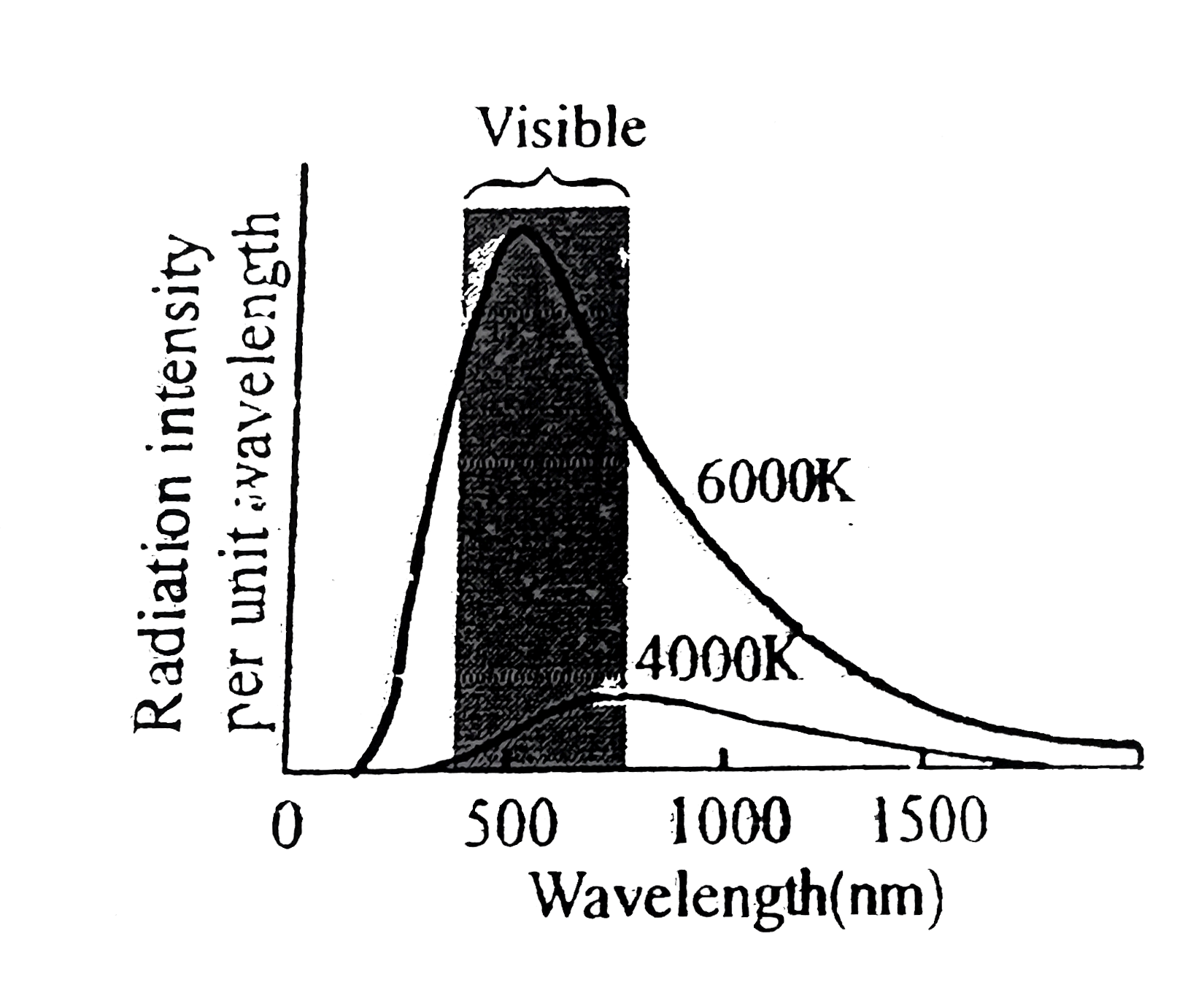
Assume that the light emitted by the bulb in the visible region is entirely of wavelength 500 nm. What is the number of photons emitted per second in the visible region?A1.25×1019B5×1019C2.5×1019D4×1019All bodies, no matter how hot or cold, continuously radiate photons. At a given temperature, the intensities of the electromagnetic waves emitted by an object vary from wavelength to wavelength throughout the visible, infrared, and other regions of the spectrum. Figure illustrates how the intensity per unit wavelength depends on wavelength for a perfect blackbody emitter. Although this figure can strictly be applied only to a black body, yet this will approximately discribe the behavior of many of the self radiating systems. For example, sun has an approximate temperature of 6000K. it is not a black body, it has an emissivity of nearly 0.6 But its peak almost occurs at a wave length that predicted by Wein's law. Suppose we have a bulb of power 100W. It emits only about 5W as visible light, rest is emitted as infrared radiated. Assume that the bulb filament has a surface area of 10mm^(2) (hc=1250eV−nm)
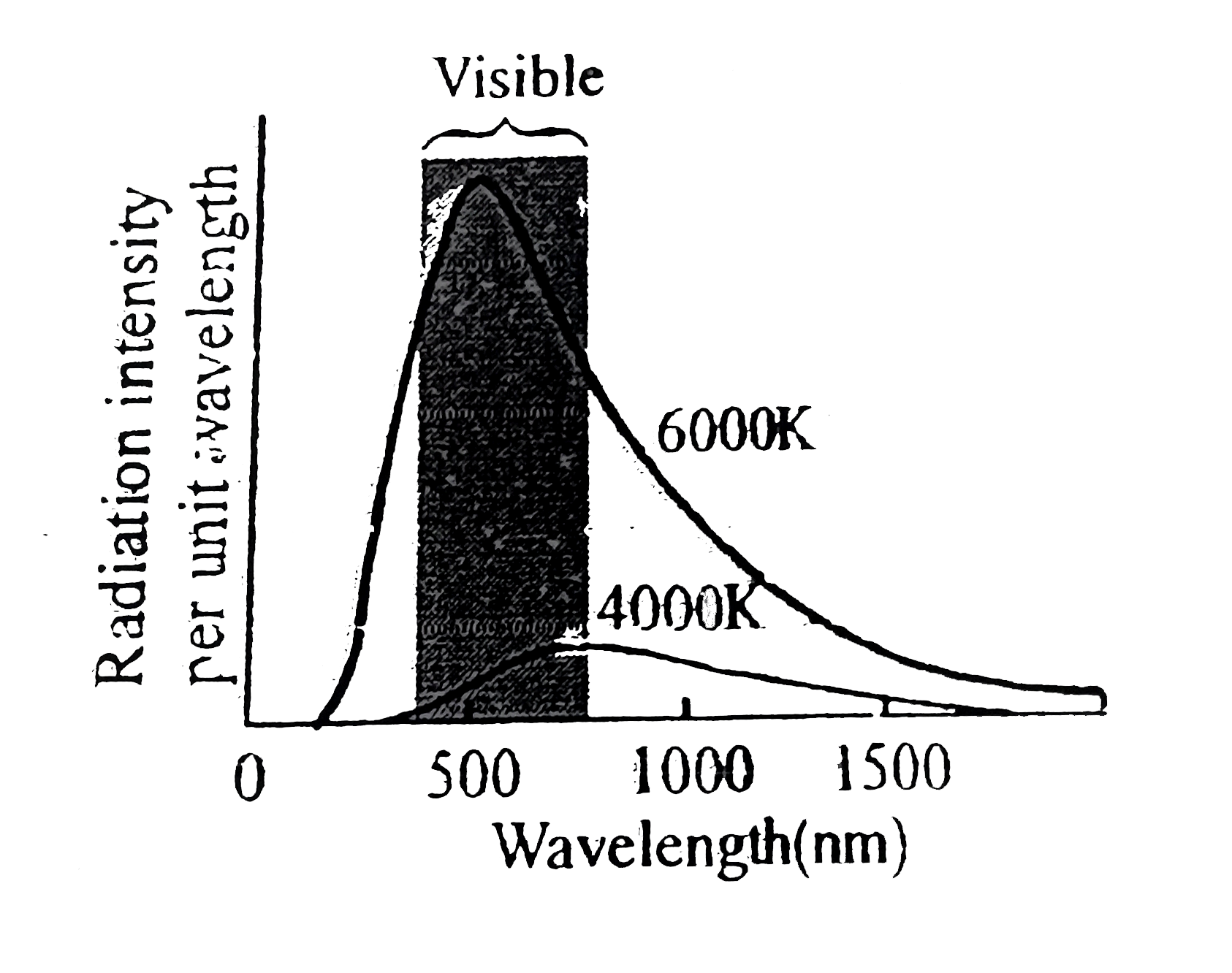
Which of the following resistances would have maximum surface temperature. All of them have a surface area of 10mm2 and same emissivity
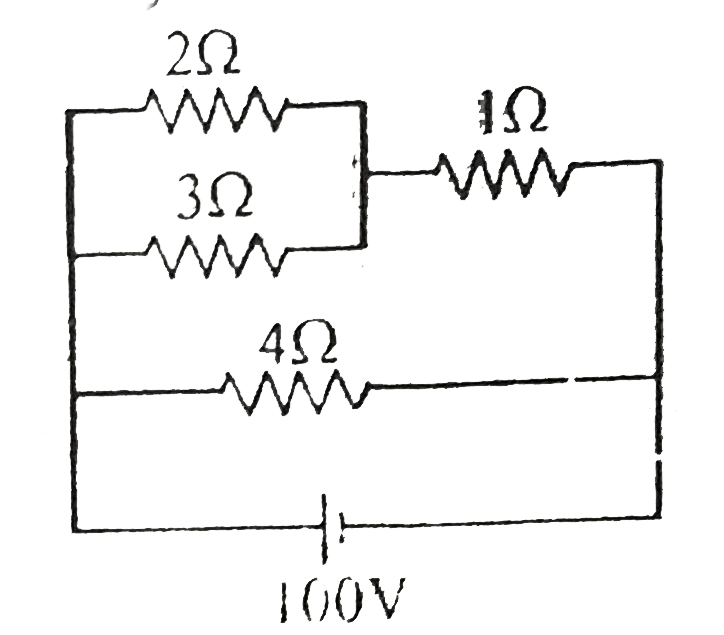 A1ΩB2ΩC3ΩD4Ω
A1ΩB2ΩC3ΩD4Ω
A hypothetical electromagnetic wave is shown in figure. Find out the wavelength of the radiation.
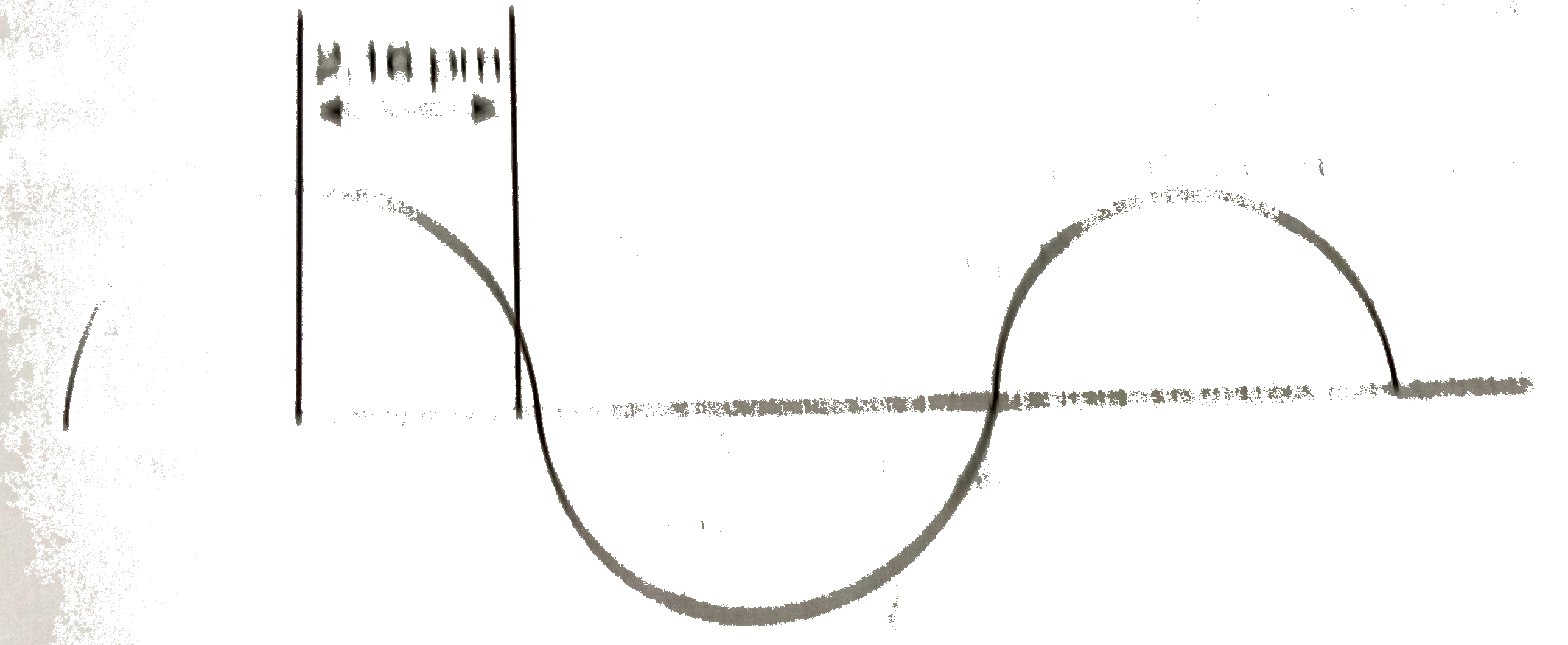
View SolutionWhat is the range of wavelength of electromagnetic waves that constitute visible radiation ?
View SolutionWhat is the range of wavelength of electromagnetic waves that constitute visible radiation ?
View SolutionThe graph shows the variation in radiation intensity per unit wavelength versus wavelength for a perfect black- body at temperature T. Complete the following statement: As the blackbody temperature is increased, the peak in intensity of this curve

View SolutionThe range of wavelength of the visible light is
View Solution
